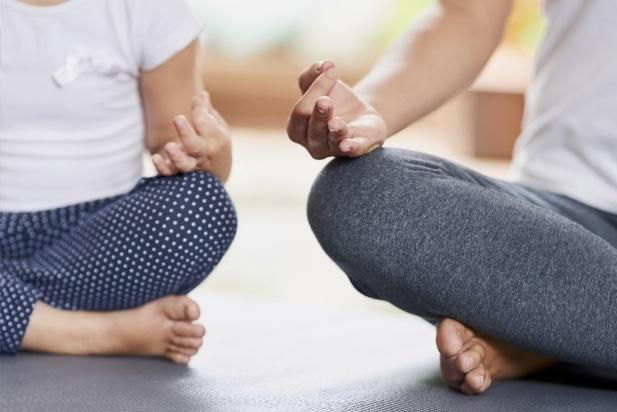Sufficient, restful sleep is incredibly important for every kid, but for those with anxiety, attention-deficit hyperactivity disorder or focus problems, it can make a huge positive difference in behavior and academic performance. You’ve probably heard the advice about establishing bedtime routines, but do you find your bedtime routine dragging on and on each night? Does your child stall for time and try to keep you in the room? Perhaps they have trouble drifting off when the lights are out. Adding guided sleep meditation at the end of the evening may help your child fall asleep more easily. In fact, you may find you want to try it yourself!
What Is Guided Sleep Meditation?
Meditation is a form of mindfulness that includes quiet, relaxation and concentration on an object, sound, word or thought. Sleep meditation simply means a meditation that takes place just before falling asleep and produces a state of complete relaxation. Sleep meditation is performed lying down in a comfortable dark room and listening to a series of relaxing words or sounds. If you want to help your child use guided meditation there are many podcasts, recordings and written scripts designed to lead kids to a more relaxed state right before falling asleep. The meditation can be an imaginative story, a description of a peaceful place, an easy-to-follow description of calm breaths or a series of calming but random sentences to help them become completely relaxed in body and mind. Listening to the meditation can help them let go of worry, stress and tension, and they may in turn find it easier to fall asleep more quickly and stay asleep for a full night of refreshing sleep.
Will It Really Help My Kid Fall Asleep?
Yes, here’s the big question: Does it work? There is plenty of research showing that mindfulness programs in general have a positive effect in lowering anxiety, depression and stress levels, as well as improving sleep quality. However, there’s not a definite consensus on sleep meditation as a specific technique. The good news is that there’s certainly no harm and no side effects to guided sleep meditation. You’ve got nothing to lose – and certainly a host of anecdotal evidence from relieved parents would support the effectiveness of this technique.
Adding Sleep Meditation to Bedtime
Ready to try guided sleep meditation with your child? Here are some easy steps to incorporate just before sleep, when your child is tucked into bed and the lights are out for the night:
● Allow your child to bring up and discuss any worries left over from the day or anything that may be on their mind.
● Take a moment to lie quietly, breathing in and out slowly and deeply together. You can make the out-breath an animal noise, such as growling or hissing, to add a little fun and encourage a long, full exhalation.
● Using a recording or reading softly from a script (even one of your own creation), allow the calming words to lead your child (and you!) into a state of quiet and relaxation. Repetition, pauses, and words that have “sleepy” connotations are important components of these meditations.
Even if your child doesn’t fall asleep immediately, they will almost certainly find it easier to drop off after unwinding with guided sleep meditation. Perhaps you will even find yourself using these easy techniques yourself at bedtime!
We’ll share helpful tips, the latest studies and personal experiences.






